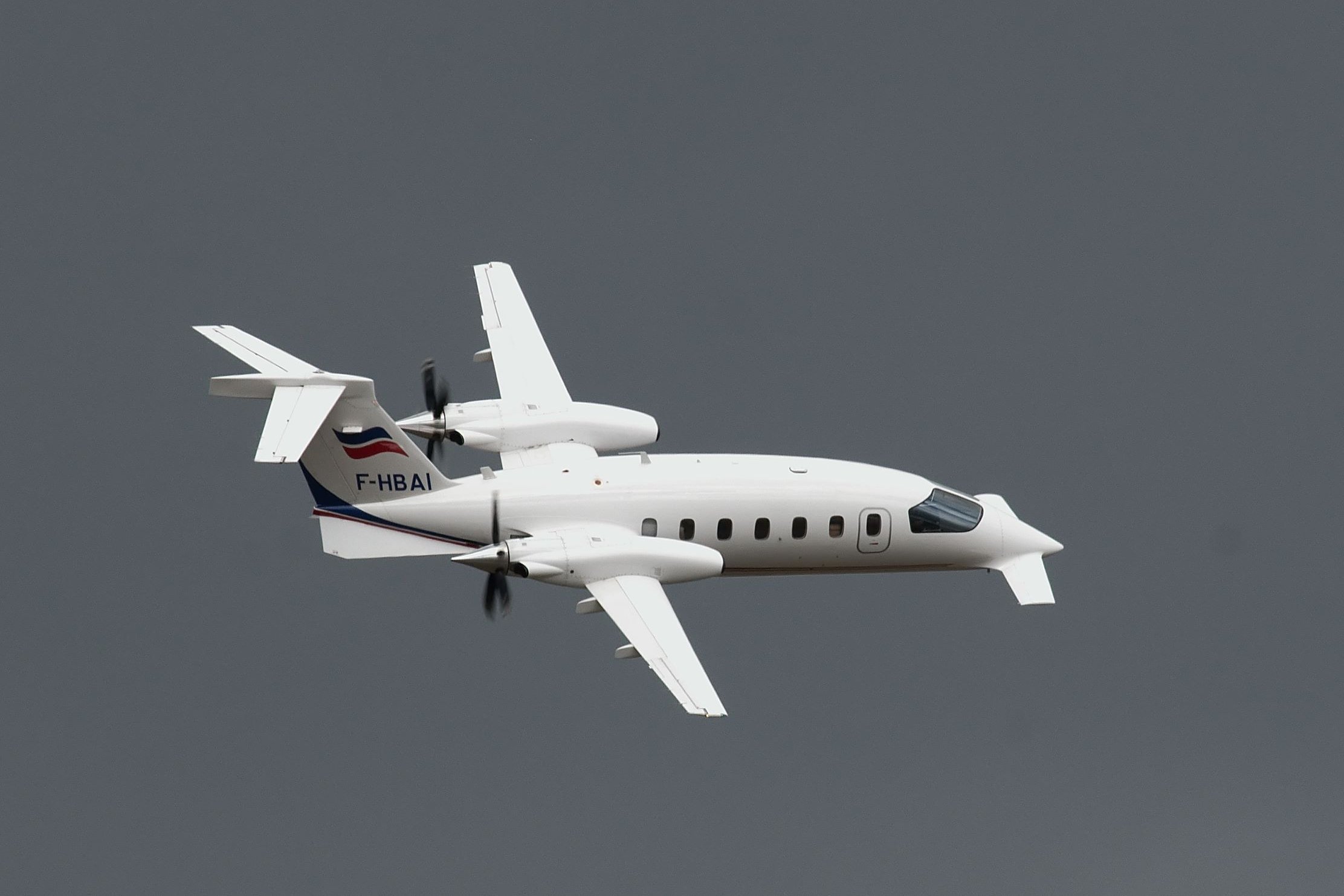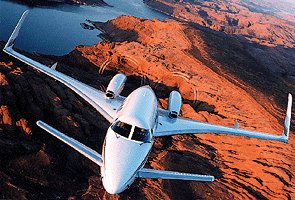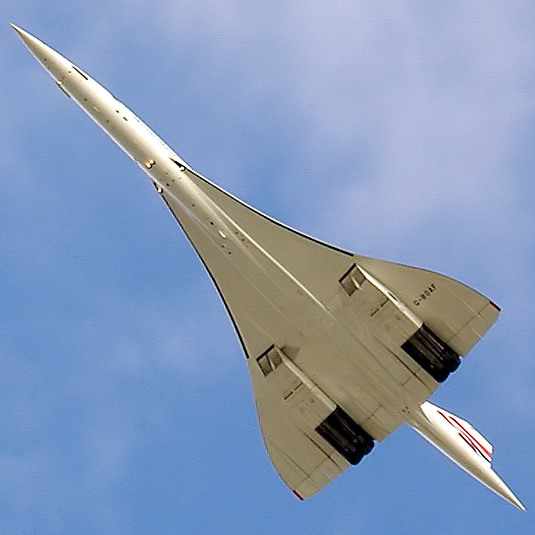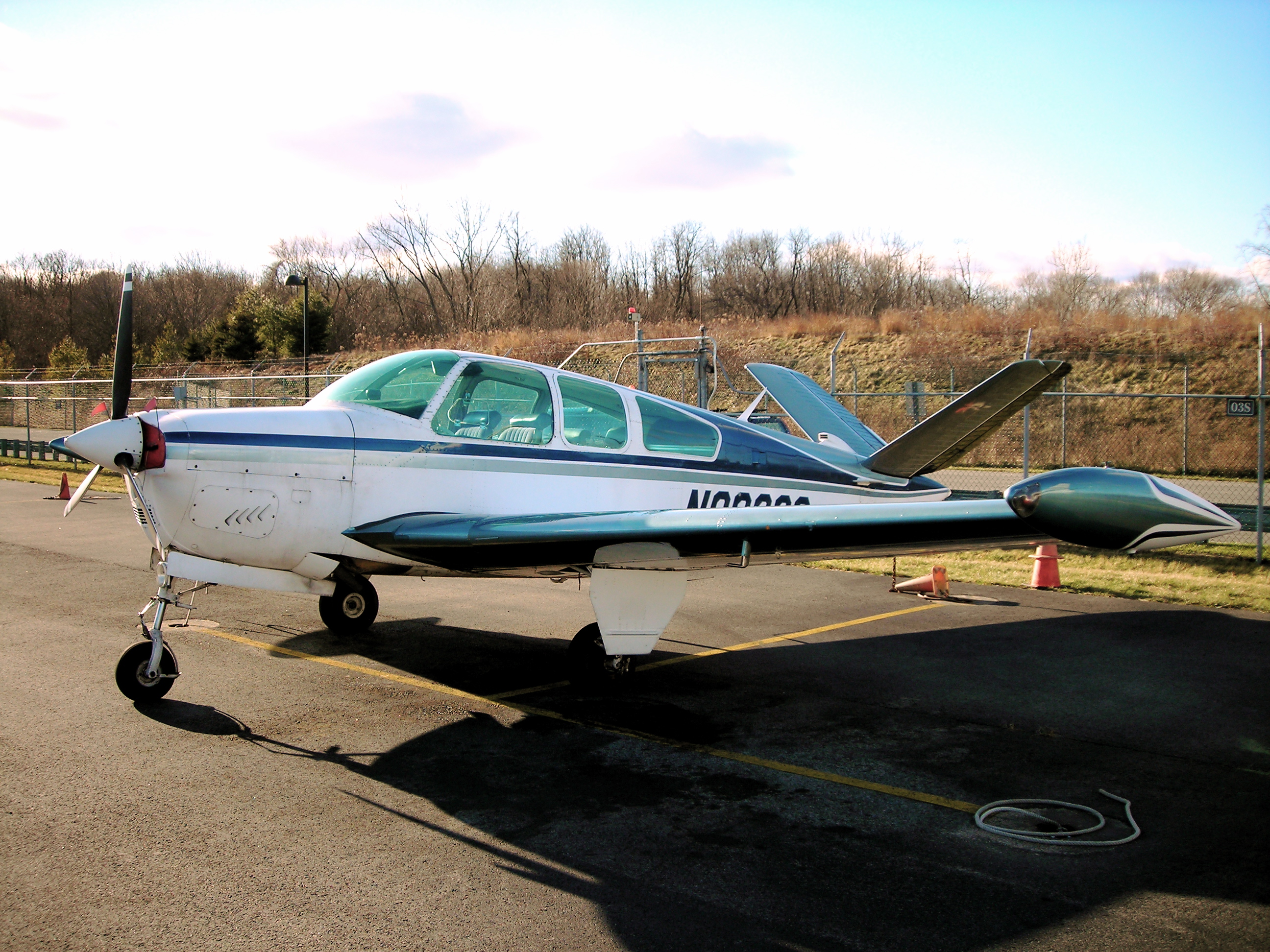Stabilizer (aircraft) on:
[Wikipedia]
[Google]
[Amazon]
 An aircraft stabilizer is an aerodynamic surface, typically including one or more movable control surfaces, that provides
An aircraft stabilizer is an aerodynamic surface, typically including one or more movable control surfaces, that provides
 A horizontal stabilizer is used to maintain the aircraft in longitudinal balance, or ''trim'': it exerts a vertical force at a distance so the summation of pitch moments about the center of gravity is zero. The vertical force exerted by the stabilizer varies with flight conditions, in particular according to the aircraft
A horizontal stabilizer is used to maintain the aircraft in longitudinal balance, or ''trim'': it exerts a vertical force at a distance so the summation of pitch moments about the center of gravity is zero. The vertical force exerted by the stabilizer varies with flight conditions, in particular according to the aircraft
 In the conventional configuration the horizontal stabilizer is a small horizontal tail or
In the conventional configuration the horizontal stabilizer is a small horizontal tail or
 Three-surface aircraft such as the
Three-surface aircraft such as the
 In the canard configuration, a small wing, or ''foreplane'', is located in front of the main wing. Some authors call it a stabilizer
Garrison, P;
In the canard configuration, a small wing, or ''foreplane'', is located in front of the main wing. Some authors call it a stabilizer
Garrison, P;
Three's Company
; ''Flying'' 129 (12), December 2002, pp.85-86: "the stabilizer in the front" ... "This is the function of the stabilizer. if it's in the back it typically pushes downward, and if it's in the front it lifts upward." Benson, T (Ed): US Paten
US 6064923 A
''Aircraft with reduced wing structure loading'': "...a front stabilizer, generally known as a canard stabilizer," or give to the foreplane alone a stabilizing role, although as far as pitch stability is concerned, a foreplane is generally described as a destabilizing surface, the main wing providing the stabilizing moment in pitch. In naturally unstable aircraft, the canard surfaces may be used as an active part of the artificial stability system, and are sometimes named horizontal stabilizers.
 Tailless aircraft lack a separate horizontal stabilizer. In a tailless aircraft, the horizontal stabilizing surface is part of the main wing.Theory and Practice of Using Flying Wings, Apogee Components
Tailless aircraft lack a separate horizontal stabilizer. In a tailless aircraft, the horizontal stabilizing surface is part of the main wing.Theory and Practice of Using Flying Wings, Apogee Components
/ref>Notes on the stability and control of tailless airplanes, Jones, Robert, naca-tn-837, 1941
/ref> Longitudinal stability in tailless aircraft is achieved by designing the aircraft so that its
 On some aircraft, horizontal and vertical stabilizers are combined in a pair of surfaces named
On some aircraft, horizontal and vertical stabilizers are combined in a pair of surfaces named
Aircraft-related terminology
* * {{Aircraft components Aircraft controls
longitudinal
Longitudinal is a geometric term of location which may refer to:
* Longitude
** Line of longitude, also called a meridian
* Longitudinal engine, an internal combustion engine in which the crankshaft is oriented along the long axis of the vehicle, ...
(pitch) and/or directional (yaw) stability and control. A stabilizer can feature a fixed or adjustable structure on which any movable control surfaces are hinged, or it can itself be a fully movable surface such as a stabilator
A stabilator is a fully movable aircraft horizontal stabilizer. It serves the usual functions of longitudinal stability, control and stick force requirements otherwise performed by the separate parts of a conventional horizontal stabilizer and e ...
. Depending on the context, "stabilizer" may sometimes describe only the front part of the overall surface.
In the conventional aircraft configuration, separate vertical (fin) and horizontal (tailplane
A tailplane, also known as a horizontal stabiliser, is a small lifting surface located on the tail ( empennage) behind the main lifting surfaces of a fixed-wing aircraft as well as other non-fixed-wing aircraft such as helicopters and gyropl ...
) stabilizers form an empennage
The empennage ( or ), also known as the tail or tail assembly, is a structure at the rear of an aircraft that provides stability during flight, in a way similar to the feathers on an arrow.Crane, Dale: ''Dictionary of Aeronautical Terms, third e ...
positioned at the tail of the aircraft. Other arrangements of the empennage, such as the V-tail
The V-tail or ''Vee-tail'' (sometimes called a butterfly tail or Rudlicki's V-tailGudmundsson S. (2013). "General Aviation Aircraft Design: Applied Methods and Procedures" (Reprint). Butterworth-Heinemann. p. 489. , 9780123973290) of an aircraft ...
configuration, feature stabilizers which contribute to a combination of longitudinal and directional stabilization and control.
Longitudinal stability and control may be obtained with other wing configurations, including canard, tandem wing QAC Quickie Q2
A tandem wing is a wing configuration in which a flying craft or animal has two or more sets of wings set one behind another. All the wings contribute to lift.
The tandem wing is distinct from the biplane in which the wings are ...
and tailless aircraft
In aeronautics, a tailless aircraft is an aircraft with no other horizontal aerodynamic surface besides its main wing. It may still have a fuselage, vertical tail fin (vertical stabilizer), and/or vertical rudder.
Theoretical advantages of the ...
.
Some types of aircraft are stabilized with electronic flight control; in this case, fixed and movable surfaces located anywhere along the aircraft may serve as active motion dampers or stabilizers.
Horizontal stabilizers
lift coefficient
In fluid dynamics, the lift coefficient () is a dimensionless quantity that relates the lift generated by a lifting body to the fluid density around the body, the fluid velocity and an associated reference area. A lifting body is a foil or a com ...
and wing flaps deflection which both affect the position of the center of pressure, and with the position of the aircraft center of gravity (which changes with aircraft loading and fuel consumption). Transonic
Transonic (or transsonic) flow is air flowing around an object at a speed that generates regions of both subsonic and supersonic airflow around that object. The exact range of speeds depends on the object's critical Mach number, but transoni ...
flight makes special demands on horizontal stabilizers; when the local speed of the air over the wing reaches the speed of sound
The speed of sound is the distance travelled per unit of time by a sound wave as it propagates through an elastic medium. At , the speed of sound in air is about , or one kilometre in or one mile in . It depends strongly on temperature as we ...
there is a sudden move aft of the center of pressure.
Another role of a horizontal stabilizer is to provide longitudinal static stability
In flight dynamics, longitudinal stability is the stability of an aircraft in the longitudinal, or pitching, plane. This characteristic is important in determining whether an aircraft pilot will be able to control the aircraft in the pitching p ...
. Stability can be defined only when the vehicle is in trim; it refers to the tendency of the aircraft to return to the trimmed condition if it is disturbed. This maintains a constant aircraft attitude, with unchanging pitch angle relative to the airstream, without active input from the pilot. Ensuring static stability of an aircraft with a conventional wing requires that the aircraft center of gravity be ahead of the center of pressure, so a stabilizer positioned at the rear of the aircraft will produce lift in the downwards direction.
The elevator
An elevator or lift is a cable-assisted, hydraulic cylinder-assisted, or roller-track assisted machine that vertically transports people or freight between floors, levels, or decks of a building, vessel, or other structure. They ...
serves to control the pitch axis; in case of a fully movable tail, the entire assembly acts as a control surface.
Wing-stabilizer interaction
The upwash anddownwash
In aeronautics, downwash is the change in direction of air deflected by the aerodynamic action of an airfoil, wing, or helicopter rotor blade in motion, as part of the process of producing lift.Crane, Dale: ''Dictionary of Aeronautical Terms, thir ...
associated with the generation of lift is the source of aerodynamic interaction between the wing and stabilizer, which translates into a change in the effective angle of attack
In fluid dynamics, angle of attack (AOA, α, or \alpha) is the angle between a reference line on a body (often the chord line of an airfoil) and the vector representing the relative motion between the body and the fluid through which it is m ...
for each surface. The influence of the wing on a tail is much more significant than the opposite effect and can be modeled using the Prandtl lifting-line theory; however, an accurate estimation of the interaction between multiple surfaces requires computer simulations or wind tunnel
Wind tunnels are large tubes with air blowing through them which are used to replicate the interaction between air and an object flying through the air or moving along the ground. Researchers use wind tunnels to learn more about how an aircraft ...
tests.
Horizontal stabilizer configurations
Conventional tailplane
tailplane
A tailplane, also known as a horizontal stabiliser, is a small lifting surface located on the tail ( empennage) behind the main lifting surfaces of a fixed-wing aircraft as well as other non-fixed-wing aircraft such as helicopters and gyropl ...
located to the rear of the aircraft. This is the most common configuration.
On many aircraft, the tailplane assembly consists of a fixed surface fitted with a hinged aft elevator
An elevator or lift is a cable-assisted, hydraulic cylinder-assisted, or roller-track assisted machine that vertically transports people or freight between floors, levels, or decks of a building, vessel, or other structure. They ...
surface. Trim tab
Trim tabs are small surfaces connected to the trailing edge of a larger control surface on a boat or aircraft, used to control the trim of the controls, i.e. to counteract hydro- or aerodynamic forces and stabilise the boat or aircraft in a pa ...
s may be used to relieve pilot input forces. Alternatively, some light aircraft such as the Piper PA-24 Comanche
The Piper PA-24 Comanche is an American four-seat or six-seat, low-wing, all-metal, light aircraft of semimonocoque construction with tricycle retractable landing gear. Piper Aircraft designed and developed the Comanche, which first flew on Ma ...
and the Piper PA-28 Cherokee
The Piper PA-28 Cherokee is a family of two-seat or four-seat light aircraft built by Piper Aircraft and designed for flight training, air taxi and personal use.Plane and Pilot: ''1978 Aircraft Directory'', pages 62–64. Werner & Werner Corp, ...
have an all-moving stabilizer known as a stabilator
A stabilator is a fully movable aircraft horizontal stabilizer. It serves the usual functions of longitudinal stability, control and stick force requirements otherwise performed by the separate parts of a conventional horizontal stabilizer and e ...
, with no separate elevator. Stabilators are also found in many supersonic aircraft, where a separate elevator control would cause unacceptable drag.
Most airliners
An airliner is a type of aircraft for transporting passengers and air cargo. Such aircraft are most often operated by airlines. Although the definition of an airliner can vary from country to country, an airliner is typically defined as an ai ...
and transport aircraft feature a large, slow-moving ''trimmable tail plane'' which is combined with independently-moving elevators. The elevators are controlled by the pilot or autopilot and primarily serve to change the aircraft's attitude, while the whole assembly is used to trim (maintaining horizontal static equilibrium) and stabilize the aircraft in the pitch axis. In the Boeing 737
The Boeing 737 is a narrow-body aircraft produced by Boeing at its Renton Factory in Washington.
Developed to supplement the Boeing 727 on short and thin routes, the twinjet retains the 707 fuselage width and six abreast seating with two u ...
, the adjustable stabilizer trim system is powered by an electrically operated jackscrew
A jackscrew, or screw jack, is a type of jack that is operated by turning a leadscrew. It is commonly used to lift moderately and heavy weights, such as vehicles; to raise and lower the horizontal stabilizers of aircraft; and as adjustable supp ...
.
Variants on the conventional configuration include the T-tail
A T-tail is an empennage configuration in which the tailplane is mounted to the top of the fin. The arrangement looks like the capital letter T, hence the name. The T-tail differs from the standard configuration in which the tailplane is ...
, Cruciform tail __NOTOC__
The cruciform tail is an aircraft empennage configuration which, when viewed from the aircraft's front or rear, looks much like a cross. The usual arrangement is to have the horizontal stabilizer intersect the vertical tail somewhere ...
, Twin tail
A twin tail is a specific type of vertical stabilizer arrangement found on the empennage of some aircraft. Two vertical stabilizers—often smaller on their own than a single conventional tail would be—are mounted at the outside of the aircra ...
and Twin-boom mounted tail.
Three-surface aircraft
 Three-surface aircraft such as the
Three-surface aircraft such as the Piaggio P.180 Avanti
The Piaggio P.180 Avanti is an Italian executive transport aircraft with twin turboprop engines mounted in pusher configuration. It seats up to nine people in a pressurized cabin and may be flown by one or two pilots. The design is of three-su ...
or the Scaled Composites Triumph and Catbird
Several unrelated groups of songbirds are called catbirds because of their wailing calls, which resemble a cat's meowing. The genus name ''Ailuroedus'' likewise is from the Greek for "cat-singer" or "cat-voiced".
Australasian catbirds are the ...
, the tailplane is a stabilizer as in conventional aircraft; the frontplane, called foreplane or canard, provides lift and serves as a balancing surface.
Some earlier three-surface aircraft, such as the Curtiss AEA June Bug
The ''June Bug'' (or ''Aerodrome #3'') was an American "pioneer era" aircraft designed and flown by Glenn H. Curtiss and built by the Aerial Experiment Association (A.E.A) in 1908. The ''June Bug'' is famous for winning the first aeronautical ...
or the Voisin 1907 biplane
The 1907 Voisin biplane (designated the Voisin II by the 1913 edition of '' Jane's All the World's Aircraft''), was the first successful powered aircraft designed by aeronautical engineer and manufacturer Gabriel Voisin. It was used by the ...
, were of conventional layout with an additional front pitch control surface which was called "elevator" or sometimes "stabilisateur". Lacking elevators, the tailplanes of these aircraft were not what is now called conventional stabilizers. For example, the Voisin was a tandem-lifting layout (main wing and rear wing) with a foreplane that was neither stabilizing nor mainly lifting; it was called an "''équilibreur''" ("balancer"), and used as a pitch control and trim surface.
Canard aircraft
 In the canard configuration, a small wing, or ''foreplane'', is located in front of the main wing. Some authors call it a stabilizer
Garrison, P;
In the canard configuration, a small wing, or ''foreplane'', is located in front of the main wing. Some authors call it a stabilizer
Garrison, P;Three's Company
; ''Flying'' 129 (12), December 2002, pp.85-86: "the stabilizer in the front" ... "This is the function of the stabilizer. if it's in the back it typically pushes downward, and if it's in the front it lifts upward." Benson, T (Ed): US Paten
US 6064923 A
''Aircraft with reduced wing structure loading'': "...a front stabilizer, generally known as a canard stabilizer," or give to the foreplane alone a stabilizing role, although as far as pitch stability is concerned, a foreplane is generally described as a destabilizing surface, the main wing providing the stabilizing moment in pitch. In naturally unstable aircraft, the canard surfaces may be used as an active part of the artificial stability system, and are sometimes named horizontal stabilizers.
Tailless aircraft
 Tailless aircraft lack a separate horizontal stabilizer. In a tailless aircraft, the horizontal stabilizing surface is part of the main wing.Theory and Practice of Using Flying Wings, Apogee Components
Tailless aircraft lack a separate horizontal stabilizer. In a tailless aircraft, the horizontal stabilizing surface is part of the main wing.Theory and Practice of Using Flying Wings, Apogee Components/ref>Notes on the stability and control of tailless airplanes, Jones, Robert, naca-tn-837, 1941
/ref> Longitudinal stability in tailless aircraft is achieved by designing the aircraft so that its
aerodynamic center
In aerodynamics, the torques or moments acting on an airfoil moving through a fluid can be accounted for by the net lift and net drag applied at some point on the airfoil, and a separate net pitching moment about that point whose magni ...
is behind the center of gravity. This is generally done by modifying the wing design, for example by varying the angle of incidence in the span-wise direction (wing washout or twist
Twist may refer to:
In arts and entertainment Film, television, and stage
* ''Twist'' (2003 film), a 2003 independent film loosely based on Charles Dickens's novel ''Oliver Twist''
* ''Twist'' (2021 film), a 2021 modern rendition of ''Olive ...
), or by using reflexed camber airfoils.
Vertical stabilizers
A vertical stabilizer provides directional (or yaw) stability and usually comprises a fixed ''fin'' and movable control ''rudder'' hinged to its rear edge. Less commonly, there is no hinge and the whole fin surface is pivoted for both stability and control. When an aircraft encounters a horizontal gust of wind, yaw stability causes the aircraft to turn into the wind, rather than turn in the same direction. Fuselage geometry, engine nacelles and rotating propellers all influence lateral static stability and affect the required size of the stabilizer. Not all aircraft have a vertical stabilizer. Instead wing sweep and dihedral can provide a similar degree of directional stability, while directional control is often effected by adding drag on the side of the aircraft the aircraft is to be turned towards, either in the form of spoilers or split ailerons.Tailless directional stabilization and control
Although the use of a vertical stabilizer is most common, it is possible to obtain directional stability with no discrete vertical stabilizer. This occurs when the wing is swept back and in some cases, as for example on theRogallo wing
The Rogallo wing is a flexible type of wing. In 1948, Francis Rogallo, a NASA engineer, and his wife Gertrude Rogallo, invented a self-inflating flexible wing they called the Parawing, also known after them as the "Rogallo Wing" and flexible wing ...
often used for hang glider
Hang gliding is an air sport or recreational activity in which a pilot flies a light, non-motorised foot-launched heavier-than-air aircraft called a hang glider. Most modern hang gliders are made of an aluminium alloy or composite frame covered ...
s, means that no fin is needed.
*Stabilization. When a swept wing is rotated in yaw the outer wing sweep is reduced, so increasing drag, while the inner wing sweep increases, reducing drag. This change in the drag distribution creates a restoring moment.
*Control. A way to get yaw control is to use differential air braking to affect the drag directly. This technique is suited to Electronic flight controls, as on the Northrop Grumman B-2 flying wing.
Combined longitudinal–directional stabilizers
 On some aircraft, horizontal and vertical stabilizers are combined in a pair of surfaces named
On some aircraft, horizontal and vertical stabilizers are combined in a pair of surfaces named V-tail
The V-tail or ''Vee-tail'' (sometimes called a butterfly tail or Rudlicki's V-tailGudmundsson S. (2013). "General Aviation Aircraft Design: Applied Methods and Procedures" (Reprint). Butterworth-Heinemann. p. 489. , 9780123973290) of an aircraft ...
. In this arrangement, two stabilizers (fins and rudders) are mounted at 90–120° to each other,F-117 Nighthawk
The Lockheed F-117 Nighthawk is a retired American single-seat, twin-engine stealth attack aircraft developed by Lockheed's secretive Skunk Works division and operated by the United States Air Force (USAF). It was the first operational aircr ...
, 90° – Fouga Magister
Fouga (also known as Air Fouga) was a French manufacturing company established by Gaston Fouga at Béziers during 1920. Originally specialising in the repair of railway rolling stock, the firm eventually became most noted for the aircraft it p ...
, 105° – Beech Bonanza, 116° giving a larger horizontal projected area than vertical one as in the majority of conventional tails. The moving control surfaces are then named ''ruddervators''.A portmanteau
A portmanteau word, or portmanteau (, ) is a blend of wordswetted area
The surface area that interacts with the working fluid or gas.
In maritime industry, maritime use, the wetted area is the area of the hull (watercraft) which is immersed in water. This has a direct relationship on the overall hydrodynamic drag of ...
, it suffers from an increase in control-actuation complexity, as well as complex and detrimental aerodynamic interaction between the two surfaces. This often results in an upsizing in the total area that reduces or negates the original benefit. The Beechcraft Bonanza
The Beechcraft Bonanza is an American general aviation aircraft introduced in 1947 by Beech Aircraft Corporation of Wichita, Kansas. The six-seater, single-engined aircraft is still being produced by Beechcraft and has been in continuous pro ...
light aircraft was originally designed with a V-tail.
Others combined layouts exist. The General Atomics MQ-1 Predator
The General Atomics MQ-1 Predator (often referred to as the predator drone) is an American remotely piloted aircraft (RPA) built by General Atomics that was used primarily by the United States Air Force (USAF) and Central Intelligence Agency ( ...
unmanned aircraft has an ''inverted V-tail''. The tail surfaces of the Lockheed XFV
The Lockheed XFV (sometimes referred to as the "Salmon") was an American experimental tailsitter prototype aircraft built by Lockheed in the early 1950s to demonstrate the operation of a vertical takeoff and landing (VTOL) fighter for protect ...
could be described as a V-tail with surfaces that extended through the fuselage to the opposite side. The LearAvia Lear Fan
The LearAvia Lear Fan 2100 was a turboprop business aircraft designed in the 1970s, with an unusual configuration. The Lear Fan never entered production.
Design and development
The LearFan was designed by Bill Lear, but not completed before his ...
had a ''Y-tail''. All twin tail
A twin tail is a specific type of vertical stabilizer arrangement found on the empennage of some aircraft. Two vertical stabilizers—often smaller on their own than a single conventional tail would be—are mounted at the outside of the aircra ...
arrangements with a tail dihedral angle will provide a combination of longitudinal and directional stabilization.
Notes
References
External links
Aircraft-related terminology
* * {{Aircraft components Aircraft controls